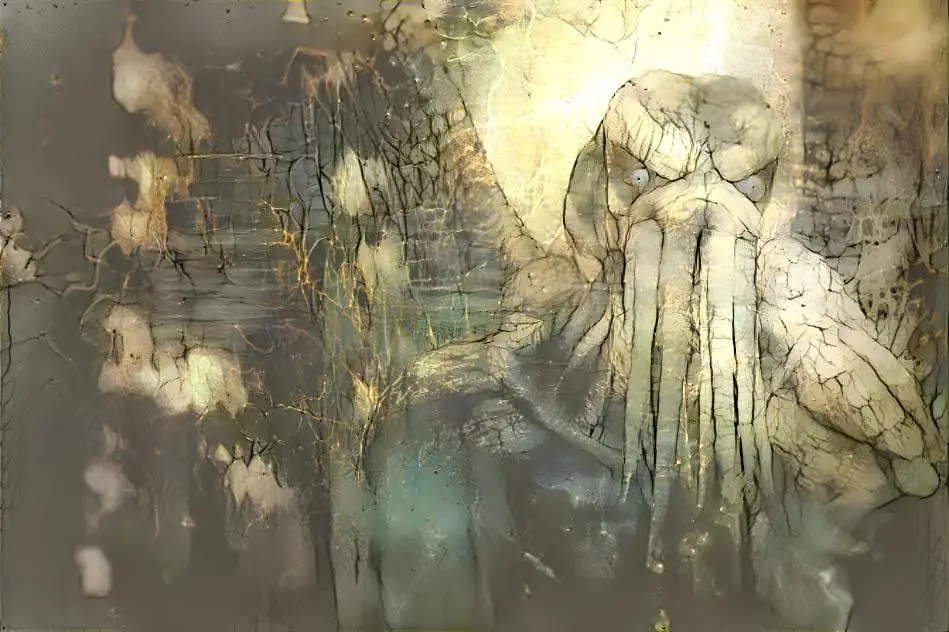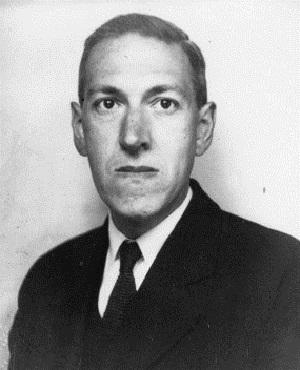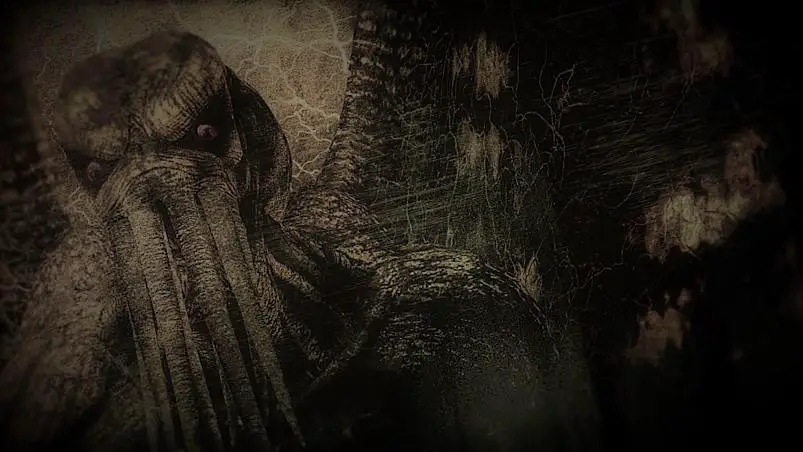Share the Lore!
By: Alex Postrado
The Otherworldly Horror of Cthulu
There is no denying that H.P. Lovecraft is indeed one of the most pivotal horror writers ever known to mankind.
So much so that no matter where we look today, traces of his works could still be seen everywhere 一 saturating literary fiction and directly influencing the works of some of the greatest names in the horror and fantasy genre of more recent years.
Robert Bloch, Junji Ito, Neil Gaiman, Stephen King, Guillermo del Toro, and Alan Moore, all took 一 and most, continue to take 一 after him.
Safe to say, Lovecraft’s literary presence is hard to ignore!
Despite contentions about him being “gallingly racist” and using his craft to pass on his xenophobic views 一 despite his oeuvres facing a long-overdue call for a “cultural reckoning“, Lovecraft’s authority in the horror genre remains inescapably timeless and plainly omnipresent.
Much like his most iconic monster 一 Cthulhu!
While not everyone loves villains, Cthulhu is 一 perhaps 一 as popular as horror fiction is.
Sure, this antagonist might not be the most powerful being in the entire Lovecraftian canon 一 that seat is taken by Azathoth, the center of the universe 一 but, there is something so unique about Cthulhu.
A god-like, inconceivable, cosmic entity that, for now, lies in wait somewhere in the same world that we live in.
To some, understanding the story of Cthulhu is understanding the birth of Weird fiction.
To others, it is understanding the mind of the controversial man behind it.
But, if truth be told, the Cthulhu lore is a vehicle for us to understand how the depths of human fear would look like if melded with the dark realities of life, along with some great and compelling writing.
Now, isn’t that a story too intriguing not to read?

Introducing, Cthulu
When Cthulhu was first introduced in Lovecraft’s 1928 short story The Call of Cthulhu, published in the American pulp fiction Weird Tales, it immediately shocked its readers.
Though Lovecraft did not elaborate much on what 一 or who 一 Cthulhu is, he left enough clues as to what we can expect upon meeting the creature.
Just imagine an immortal being, so powerful and out-of-this-world that its name, appearance, powers, and origin lie far beyond human understanding 一 that is what Cthulhu is!
According to the story, the Earth was once at the helm of Cthulhu. And one day, it would return to rule it again.
When that time arrives, it is said that chaos and mayhem will ensue, while men “revel in their most base instincts“.
The worst part about Cthulhu’s return is, there is nothing we can do about it 一 it is inevitable!
For the record, many have tried to decipher what exactly Cthulhu is. On the whole, though, it seems like we can only know so much.
For starters, how do we pronounce the enigmatic name?
Is it “kuh-thoo-loo“?
“Cut-uh-loo“? “Clue-loo“?
Lovecraft stated that the name Cthulhu actually came from a language that “wasn’t compatible with human speech”.
The language of the Great Old Ones 一 a class of cosmic entities who possess great power and were once reigning gods of the Earth.
Despite inconsistent records, most suggest that “khûl-lhoo” is the closest humans can get to the actual pronunciation of the name Cthulhu 一 “with a guttural vocalization on the first syllable“.
Other monikers the celestial entity have been called are “Kthulhut“, “Great Tulu“, “Tsathoggua”, “The Dread One”, “The Slumbering One”, “The Star Spawn“, and “High Priest of the Great Old Ones“. And as we know, the list goes on.
But even more confounding than the monster’s name is its appearance.
Cthulhu is not just a part of the Great Old Ones. As one of its names signifies, it is 一 in fact 一 the priest 一 in other terms, the leader 一 of the group!
So, it makes total sense that Cthulhu shares the only definite description of what the Old Ones look like:
As beings “too abstract to be accurately described by human perception“.
Similar to how it went for its name, attempts to delineate Cthulhu’s visage were made countless times since Lovecraft first published his story.
But most detailed descriptions were only based on existing statues and other artistic renderings of the creature.
Cthulhu, in these depictions, often yielded a “vaguely anthropoid outline“.
It has “an octopus-like head”, “a scaly, rubbery-looking body”, “a pair of rudimentary wings“, and “a mass of feelers” surrounding its supposed mouth.
Basically, a caricatured mix of a giant octopus, a dragon, and a human!
And it is said that even catching a glimpse of Cthulhu would destroy the sanity of those who see it.
The good news? Cthulhu is far from us and is taking a deep slumber.
The bad? There is a cult that continuously chants to hasten its waking.
Where Cthulu Takes It’s Deep Slumber
Cthulhu is undoubtedly a prodigious, cosmic being. And the entirety of the Lovecraftian universe is rightfully named after it 一 the Cthulhu Mythos.
In the original Cthulhu story, readers were introduced to a narrator whose great uncle owned a “strange sculpture” of an otherworldly monster.
Then enter the origins of the Great Old Ones 一 and simultaneously, the cults that worship them.
As the story recalls, the Great Old Ones came to Earth eons before a fraction of human life even existed.
They are “unique, malignant beings” who inhabit the city of R’lyeh with their leader, Cthulhu.
When the Old Ones faced resistance from entities called the Elder Things 一 the first alien species to colonize the Earth 一 terrestrial war immediately followed.
And soon, Cthulhu and the other gods found themselves entombed under the Earth’s crust, beneath the bowels of the Pacific ocean in their lost, sunken city.

While Cthulhu remains dormant for now, it still possesses its unimaginable power, which it now only uses to communicate with humans through dreams and visions until a time it finally gets to unleash its full potential once more.
And this telepathic ability was what tapped the first humans to establish the Cthulhu Cult.
As the story goes, only “the minds of particularly creative or insane people” were susceptible to the calls of Cthulhu.
No one knows for sure when this cult has started to form nor how large the “primitive“, worshiping legions are, but they are believed to be scattered across the globe 一 in areas like Arabia, the mountains of China, Greenland, New Zealand, and even Louisiana.
In general, the Cthulhu Cult practices nihilism and seeks to free Cthulhu and the Great Old Ones to see them reclaim dominion over the world and usher in the era of uninhibited violence and absolute chaos 一 where all of humanity will be mercilessly annihilated, while the cult members were killed off instantly and “relatively painlessly“.
With that, the Cthulhu Cult shouts their incessant chant “Ph’nglui mglw’nafh Cthulhu R’lyeh wgah’nagl fhtagn” 一 which translates to, “In his house at R’lyeh, dead Cthulhu waits dreaming“.
Unlike what some may assume, the cult was far from being the only group to worship Cthulhu.
The ocean-dwelling, nonhuman race known as the Deep Ones, as well as the extraterrestrial Mi-go 一 both of whom were also creations of Lovecraft 一 were also followers of the great Cthulhu.
And all of them, we suppose, would join forces with Cthulhu once it ultimately awakens to cast aside all concepts of humanity and civilization in the world.
The Origin of the Greatest Lovecraftian Monster
If we are to talk about the origin of the monster, Cthulhu, then it is going to be easy.
Born on a planet from the 23rd nebula, called Vhoorl, Cthulhu traveled to the star Zoth, then to Saturn and Earth, landing on a continent in the Pacific to erect the stone city of R’lyeh 一 simple.
But, if we are to trace the origin of the whole Cthulhu myth, then it is a different story.
According to reports, Lovecraft may have drawn from “many different literary inspirations” when he crafted the Cthulhu myth.

The 1830 sonnet, titled The Kraken, by Alfred Tennyson and 1896 book The Story of Atlantis by William-Scott Elliot are notable contenders, along with numerous other ancient and medieval legends and myths 一 like that of the earth-dwelling Chthonic figures of Greek mythology, where the unusual name Cthulhu was said to be derived from.
Regardless of the origin, Cthulhu persisted to become a staple of modern horror and a reflection of a myriad of other “monsters“, whether fictional or prehistoric 一 like the 430 million-year-old tentacled sea-crawler, named Sollasina cthulhu, after the greatest terror Lovecraft has ever created.
Does Cthulu Exist in Real Life?
The problem with the Cthulhu myth does not end with how we can possibly separate the art from its problematic artist.
It also includes whether or not it is possible to actually do it.
As humans, we have a deep-seated fear of the possible horrors lurking deep in the ocean 一 inciting the belief in the Kraken, mermaids, and other sea monsters.
But, while our anxieties in those are as real as everything is, we also know for a fact that Cthulhu, specifically, is 一 more likely than not 一 a creature of fiction built only on Lovecraft’s collective fear and imagination.
It is no secret that almost all of Lovecraft’s work is riddled with overt racist and xenophobic metaphors 一 which, at its core, symbolized Lovecraft’s distress at the thought of miscegenation in a time of the immigration influx of what he called “primitive half-ape savagery” in the U.S., as well as his overwhelming fear that he, himself, might also have an “impure bloodline”.
And thus, the chimera-esque Cthulhu 一 among other Lovecraftian monsters 一 was born.
A haunting embodiment of the possibly real, sleeping monster that Lovecraft dreads to acknowledge, which would instantly drive the human in him insane if he ever tries to get a sight of it.
References:
Cthulhu - Fictional Character Cthulhu Explained: Origin, Powers & Mythos How Cthulhu Works Cthulhu - The H. P. Lovecraft Wiki Cthulhu: The True History Of The Cosmic Entity Lovecraftian Horror — And The Racism At Its Core — Explained 430 Million-Year-Old Fossil Of Sea Creature Named After Lovecraft's Cthulhu Mythos
